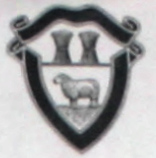
According to “The Cyclopaedia of South Australia”( Volume 2, 1909 edition), ‘several cross country roads converge on Saddleworth, and as it has also a railway station the importance of the town, both as a gathering and distributing centre, is enhanced thereby.’ Saddleworth has always been a centre for agriculture and grazing. “The Cyclopaedia” goes on to comment about the town‘s suitability as a place for stock sales, and the importance of wheat farming to the area.
Saddleworth is built on land originally taken up by James Masters, and is named after his former home in Yorkshire. As early as 1840 Masters, in partnership with his nephew and a friend, controlled a sizeable part of the new colony. One of their holdings extended from the site of the present day town of Riverton, to where Auburn and Saddleworth now stand. Saddleworth‘s beginnings were an out-station of Masters‘ property known as Stone Hut.
From these beginnings Saddleworth grew into a prosperous centre for both farming and transport. It was indeed at the centre of the surrounding settlements. It was also located on one of the main routes to the Burra copper mines, both for road and rail transport. “The Cyclopaedia” comments favourably about its four churches, two hotels, and the well-stocked stores. Like most towns of significance in the era, it had blacksmiths, all manner of tradesmen, produce stores, and all of the amenities. It was a town of some significance.
By David Gibbs
Saddleworth Historical Society
The Register of 16 September 1846 mentions 'Saddleworth Hotel, on the Burra road, section 2803' and, on 28 November 1846:
Passing north of Mr Master's station... we reached the before-mentioned incipient tavern, first known as the "Stone Hut" then as the Saddleworth Hotel... and now appropriately called the "Miners' Arms" by those jolly operatives going to or returning from the Monster Mine. The main building... is ready to receive the roof... In the meantime the business is carried on in the extensive lean-to at the back by Mr and Mrs Uphill.
The Saddleworth Hotel 'being now Completed' was advertised by its proprietor, Robert Harris, in 1847. James Masters obtained the land grant of section of 2803 on 25 February 1846 and on it he built the 'Saddleworth Hotel' which he leased to Robert Harris for 14 years (registered on 13 December 1848); an underlease was given to William Coghill on 14 February 1850 - Coghill purchased the freehold of section 2803 from Mr Masters on 26 July 1853. In 1895, the township of Saddleworth, better known to old colonists as the 'Stone Hut' was beginning to show signs of enterprise, while the earliest memorial conveying an allotment in the town is dated 14 December 1852. In 1862, the annual school examination took place when the Prizewinners were, 'M.J. Wood, M. Foster, C. Wood, F. Munns, C. Maslin, A. Filmer, S. Harrold, J. Watts, M. Foster, J. Foster... ' (See Coghill Creek) Mr Masters was born at 'Saddleworth Lodge', Yorkshire, England, written in 1230 as sadelword-wort - 'on a saddle like a ridge'. The Hundred of Saddleworth, County of Light, was proclaimed on 7 August 1851.
SADDLEWORTH is a postal township, under the control of the central road board, in the hundred of Saddleworth, and electoral district of the Burra. It is situated on the juction of the Gilbert river and Coghill's creek, Pine creek flowing at a distance of 2 miles, and there being a range of hills(a continuation of the Belvidere range) at a distance of 2 miles E., and some high stony hills and rough stony country to the N.W.
Saddleworth is essentailly an agricultural district, producing large quantities of wheet, but very little else. There are no mines, although there are indications of copper, and abundance of ironstone in the neighbourhood. There is 1 steam flour mill, just erected, a post office, and a public pound. The nearest places are Riverton, 6 1/2 miles S., Chingford, 6 miles N.; Marrabel, 6 miles S.E.; and Auburn, 7 miles N.W.; there being no regular passendger communication with those places. Saddleworth is about 65 miles N.E. of Adelaide by direct road via Kapanda. There is 1 hotel (Stuart's) in the township. The surrounding country is elevated and broken, having occasional small rich alluvail flats lying amoungst the hills. The Geological formation consists principally of sandstone ridges running N. and S., with occasional quartzose and micaceous schist intervening. In some of the quartz, partivularly in that found in the bed of a small creek to the E. of the township, specks of gold have been found. The resident magistrate is A. Coleman, Esq., J.P.
SADDLEWORTH (Co. Light) is a hundred lying in the N. part of the country, and consisting of purchased land, most Of which is used for agricultural purposes. The township of Saddleworth, on the main North road via Clare, lies in this hundred. It is watered by the upper part of the Gilbert river and its tributaries. The area of this hundred is 48,000 acres, of which 21,818 acres are under cultivation. The population numbers 1204 persons, chiefly farmers.